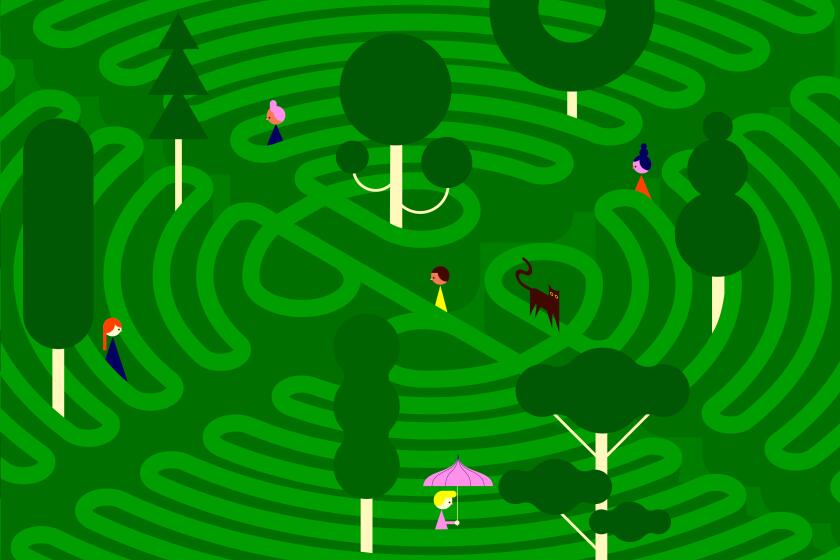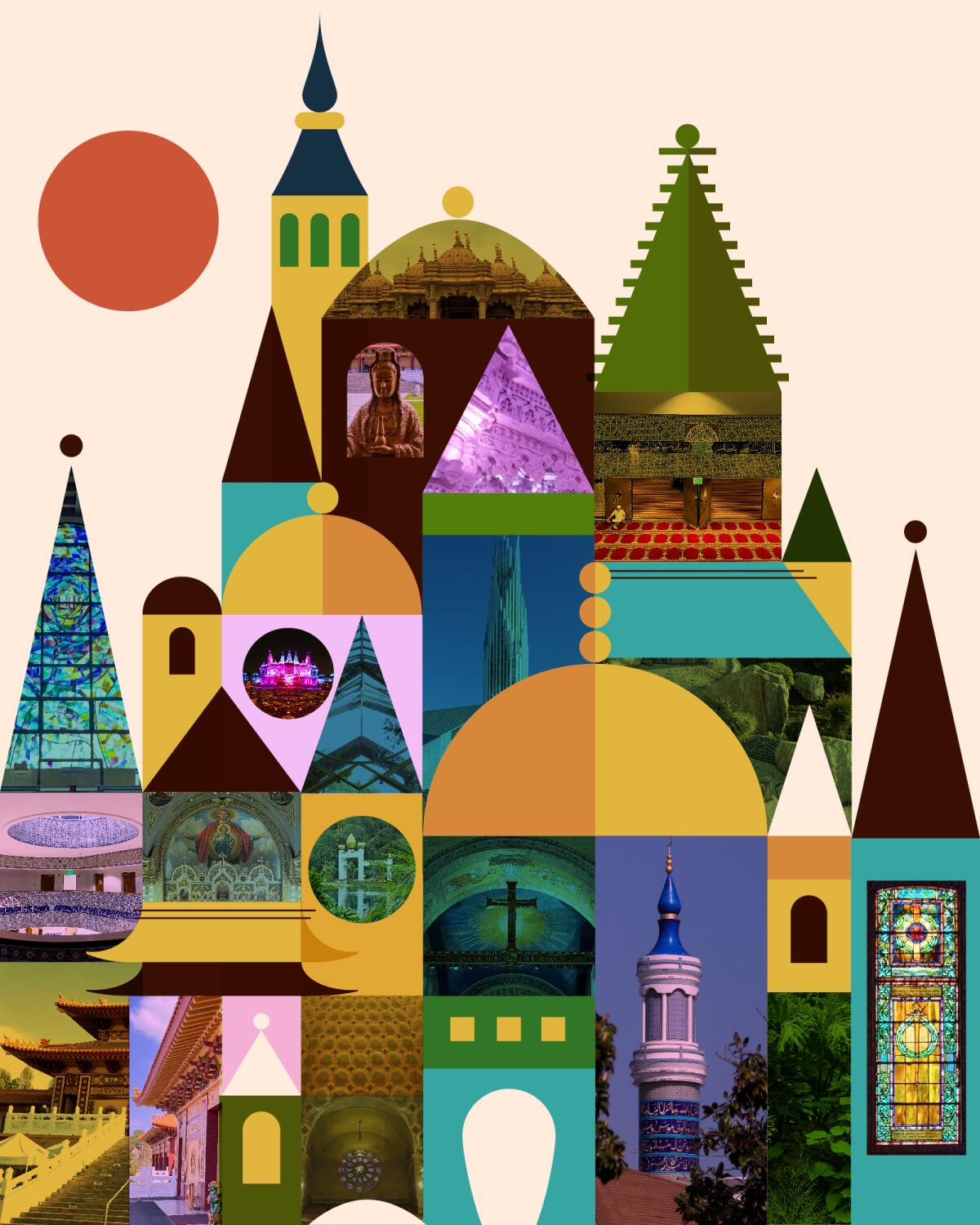
11 incredibly beautiful sacred spaces in Southern California that inspire awe
Here in Southern California, we don’t need opulent churches or glimmering temples to commune with God, the divine or our higher selves.
Watching the rhythmic roll of the ocean might do it. Finding a quiet spot on a hike. Lighting a candle in your bedroom. Noticing a flower blooming in a crack in concrete.
And yet, if you’re like me, you can acknowledge that there’s something special about stepping into a vast and beautiful space built for collective and private worship that causes your heart to swell. It might be the architecture, or the sheer size of the structure. Maybe it’s the resonance of all those collective prayers. Maybe it’s the deep hush. The dim lights.
Planning your weekend?
Stay up to date on the best things to do, see and eat in L.A.
Listed here are some of the sacred spaces I’ve visited in and around Los Angeles that made me say “Wow,” over and over again.
Many of the buildings had some extremely wealthy donors. It takes serious money to build monumental spaces that convey the permanence of the divine. Sometimes that money can be assembled through many small donations, but having congregants with deep pockets helps.
Visitors of all faiths and no faiths are warmly welcomed at every place mentioned below, and questions are encouraged.
A final note: This is not an exhaustive list and it does not include all of the region’s many different religions. Treat this guide as a first step into this awe-inspiring world and a small slice of what’s out there. If you have a suggestion for a missing location, email me at [email protected] and it may be included in future coverage.
Find yourself at these Los Angeles-area labyrinths when you’re feeling overwhelmed — or when you just want a calming, off-the-beaten path experience.
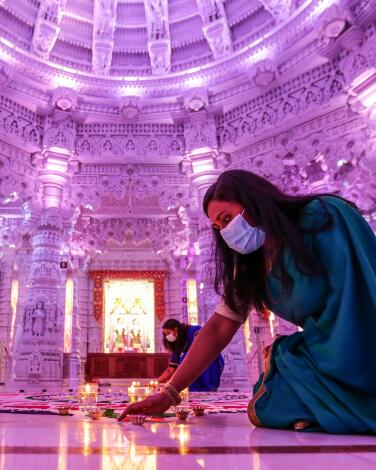
BAPS Shri Swaminarayan Mandir
There’s a small museum on the ground floor detailing the making of the Mandir, which was built with the help of 900 volunteers. On the second level, you’ll find the heart of the Mandir itself, with even more intricate carvings, this time in white Italian marble. Small plaques with QR codes provide more detail about the carvings and the colorful murtis (sacred images) along the perimeter of the shrine. If you time your visit right you can witness the Arti ceremony, a veneration of the sacred images through fire that takes place daily at 11:15 a.m. and 7 p.m. At the end you will be invited to wave in consecrated candlelight. (You can confirm the times at the visitor center.)
The Mandir has a dress code — tops must cover the shoulder, back, chest, navel and upper arms, and legwear must be below knee-length. However, sarongs are provided if you need one.
Pro tip: Be sure to check out the on-site Indian grocery store and vegetarian cafe before you leave.
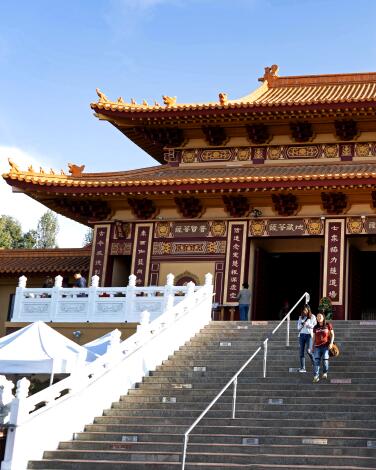
Fo Guang Shan Hsi Lai Temple
No appointment is needed to visit the temple complex, which spans 15 acres. After passing through the Welcome Gate you’ll ascend several steps to the Bodhisattva Hall, which holds five large statues representing different desirable aspects — discipline, benevolence, compassion, wisdom and the desire to save suffering beings. On the day I went, visitors were invited to pull a small piece of paper from a jar marked Dharma Words, which were translated and interpreted by a volunteer. (My slip of paper, which suggested I talk less and stop comparing myself to others, was weirdly accurate, and very humbling!)
A small information center provides self-guided audio tours upon request, and bilingual volunteers are available to answer questions seven days a week. As you make your way through the temple you will encounter gardens, fountains and lots of statues, most of which include plaques in English and Chinese explaining their significance. I can think of fewer more peaceful places to meditate than in the main shrine room, surrounded by 10,000 small Buddha statues that serve as a reminder of the Buddha nature in every one of us. The temple also serves a $10 vegetarian buffet lunch on weekdays from 11:30 a.m. to 1:30 p.m. and on weekends from 11:30 a.m. to 2:30 p.m.

Wayfarers Chapel (Currently closed to visitors)
The 100-seat Wayfarers Chapel in Rancho Palos Verdes doesn’t need grandeur to inspire awe. In this intimate seaside church made almost entirely of glass, it is the beauty of nature that ignites the spirit: the plantings that mimic a forest floor, the redwood pillars that rise like tree trunks to support the glass structure, the stone baptismal font that resembles a burbling spring. Built as a national memorial to the 18th century mystic and theologian Emanuel Swedenborg, it was designed by Lloyd Wright (one of Frank’s sons) and completed in 1951.
Visitors also are invited to tour the 3.5-acre chapel grounds, which include landscaped gardens, a hillside stream, a reflection pool, a visitors center and gorgeous views of the Pacific Ocean. The chapel and the grounds are open daily to the public from 9 a.m. to 5 p.m. If you want to spend time inside the glass building (you do), call ahead to make sure there are no events scheduled for when you plan to arrive. It’s often booked for weddings and memorials.

Christ Cathedral (formerly the Crystal Cathedral)
The original cathedral was completed in 1980 and was designed as a hybrid church and television studio for televangelist Rev. Robert H. Schuller. It is home to the fifth-largest organ in the world, and is located on an expansive campus that includes a striking 18-story stainless-steel mirrored bell tower and the elegant 13-story Tower of Hope, designed by Richard Neutra. Free tours of the cathedral are available Monday to Thursday at 1 and 2 pm. Also make sure to check out the Lady of La Vang Shrine located on the opposite side of the chapel from the memorial gardens, which opened to the public in 2021. It depicts a 12-foot-tall Virgin Mary as she is believed to have looked to persecuted Catholics in Vietnam’s La Vang forest in 1798.
Pro tip: The gargantuan women’s bathroom is pure 1980s fabulousness in black, gold and mahogany and not to be missed!
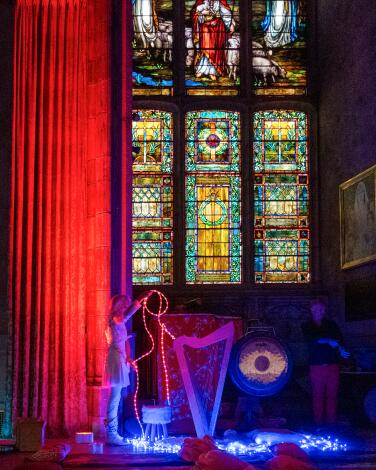
First Congregational Church of Los Angeles
In the 800-seat sanctuary you’ll find one of the largest working church pipe organs in the world, as well as a state-of-the-art sound system. An array of colored LED light options enhances the drama of its classic architecture, modeled on the great cathedrals of France and England. The Gay Men’s Chorus of Los Angeles rehearses here. So does the women’s choir Vox Femina and the Key Change Ensemble, a trans choir — and they all perform occasional concerts at the church as well. When you visit, be sure to check out the more intimate Shatto Chapel, with its towering stone pillars, vaulted ceiling and stained glass windows.
Perhaps the best way to see the church is to attend an event on its premises. It hosts a free organ concert each Sunday morning from 10:30 to 11 a.m. before services start. Other events are listed on the church’s calendar.
Pro tip: Parking at the church is usually free but a few events do charge for parking (between $10 and $20), so check the church’s website before you go.
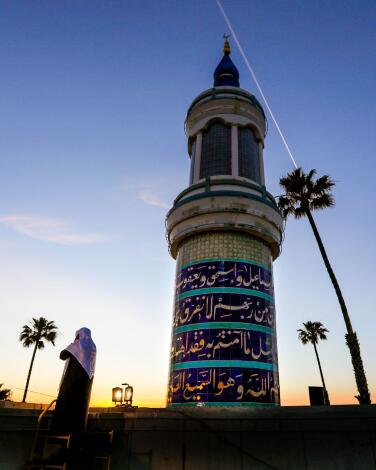
King Fahad Mosque
The building was a gift to the Los Angeles Muslim community from King Fahd Bin Abdul Aziz Al-Saud, the late king of Saudi Arabia, and his son His Royal Highness Prince Abdul Aziz Bin Fahd, and designed by the mosque’s founder and executive chairman, Khalil Alkhalil. It is slightly askew to the street because it is oriented east toward Mecca in Saudi Arabia.
Inside you’ll find a round lobby ringed with custom Turkish tile. A library off to the right includes a beautiful and expansive collection of books in Arabic and English, as well as a framed piece of gold-embroidered silk cloth that once covered the Kaaba — a square shrine near the center of Mecca. The main prayer room, where up to 2,000 men can pray at a time standing shoulder to shoulder, has walls of marble and pillars covered in tile and is capped with a gorgeous tile dome and a large chandelier. Women pray in a smaller, carpeted room upstairs, also adorned with tile and marble, with windows that look out on the main prayer room.
Guests are warmly welcomed to visit the mosque. You can make an appointment for a tour on its website or call the office. Women will be asked to enter through a separate entrance, and modest dress is required — long pants or skirts, no tank tops. Women do not need to cover their hair to enter the mosque, but it is a sign of respect and appreciated. Also: Get ready to take off your shoes.
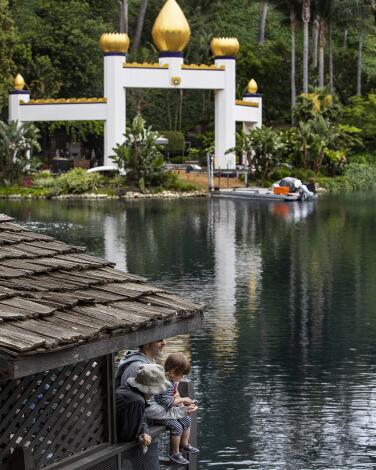
Self-Realization Fellowship Lake Shrine
Yogananda believed in the underlying unity of all religions, and the Lake Shrine property includes a “Court of Religions” where you’ll find monuments to the five major religions of the world: Buddhism, Christianity, Islam, Judaism and Hinduism. Other highlights include a reproduction of a 16th century windmill that houses a small carpeted chapel (photos are not permitted inside); a radiant white temple without walls; and the Gandhi World Peace Memorial, which contains a portion of Gandhi’s ashes.
Pro tip: For an especially beautiful meditation spot, head to the sunken garden, where you will feel enclosed by greenery.
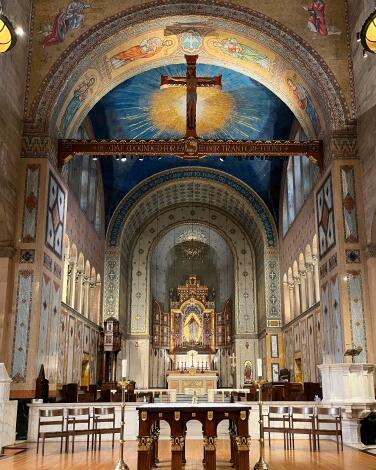
St. John’s Episcopal Cathedral
St. John’s organized as a congregation in 1890 and erected a small wooden church that same year in an orange grove on what was then the edge of town. Construction on the current building, right next door to the original church, began in 1922; it was consecrated in 1925.
It’s a lovely cavernous space, with towering rounded arches, dark handmade floor tiles and painted wood beamed ceilings modeled on an 11th century church in Florence. But the highlight is the glimmering and expansive high altar at the front of the church. Here, layers of recessed arches decorated in intricate mosaics draw the eye deeper and deeper to the figure of the ascending Christ in a carved triptych in the apse. A large mosaic of a radiant light beaming against a blue sky on the dome above it was meant to represent the creation of the world, but to me it felt like divine energy shining down on all of us.
The church is open on Sunday mornings from 8 a.m. to noon and welcomes all visitors.
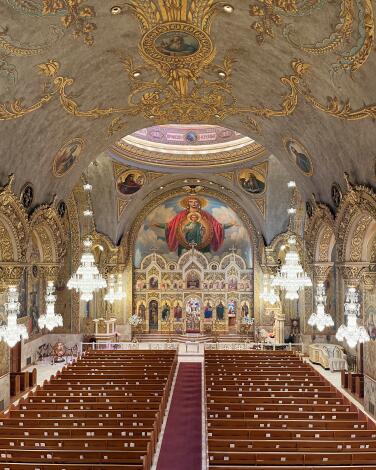
St. Sophia Greek Orthodox Cathedral
The church was built by Charlie Skouras, a Greek immigrant who became president of National Theaters, which operated thousands of cinemas across the country. The story goes that early in his career, Skouras vowed that if God granted him success in the entertainment industry he would build a majestic cathedral in God’s honor. St. Sophia, which opened in 1952, is that cathedral.
The cathedral is open for services beginning at 9 a.m. on Sunday. If you’d like to see it during off hours, you can call the office and schedule a tour. Weekdays between 9 a.m. and 3 p.m. is best. Everyone is welcome.
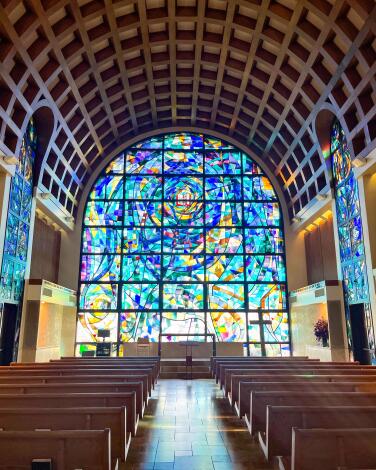
Stauffer Chapel at Pepperdine University
The chapel is used by two different congregations on Sundays, and by the university community throughout the week for lectures and concerts. Tim Spivey, associate vice president for spiritual life at Pepperdine, said it’s a room built for the human voice: Very rarely does anyone need a mic. The chapel used to be available to the public for weddings and memorials, but not anymore.
Spivey is especially partial to the small prayer garden at the back of the chapel that looks out over the Pacific Ocean. On a clear night, when the moon is hanging low in the sky, he said, there is no better view in Los Angeles.
Guests are welcome to visit the chapel, but Spivey asks that you call ahead. Hours vary.
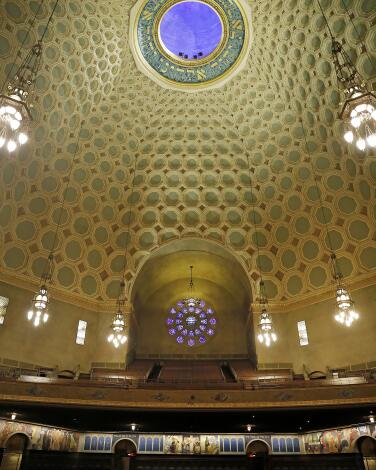
Wilshire Boulevard Temple
Much of this grandeur was paid for by some of the most powerful Hollywood moguls of the 1920s. The murals were sponsored by three of the Warner brothers and painted by their studio artist Hugo Ballin. Carl Laemmle donated the bronze chandeliers. Louis B. Mayer of MGM was responsible for the east and west stained glass windows. Film executive Irving Thalberg covered the cost of the painting of the Shema.
On the opposite end of the architectural spectrum, you’ll find the Rem Koolhaas-designed Audrey Irmas Pavilion sitting right next to the 1920s temple building. A hyper-modern 55,000-square-foot events space, it was completed in 2019 and houses more intimate spaces for worship and gathering.
If you’d like to see the temple yourself, call the tours department at (213) 835-2195 for more information.
Sign up for The Wild
We’ll help you find the best places to hike, bike and run, as well as the perfect silent spots for meditation and yoga.
You may occasionally receive promotional content from the Los Angeles Times.
